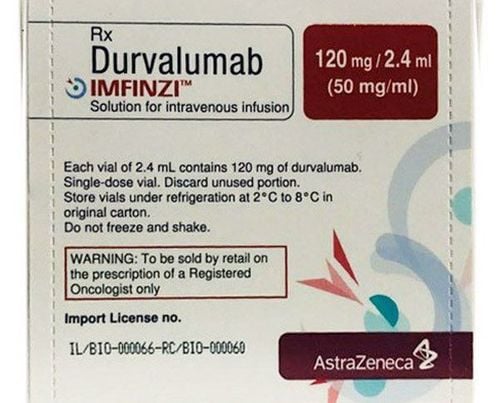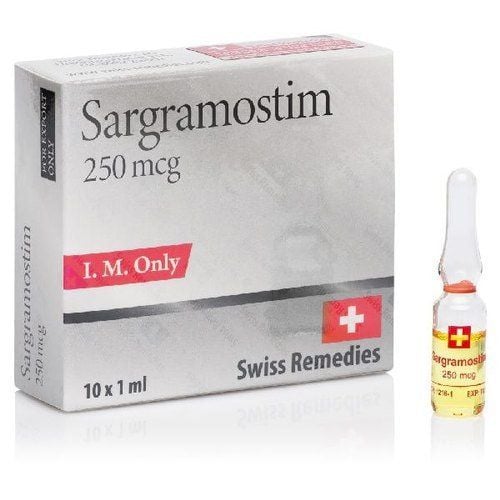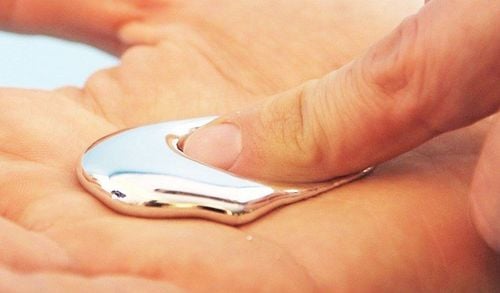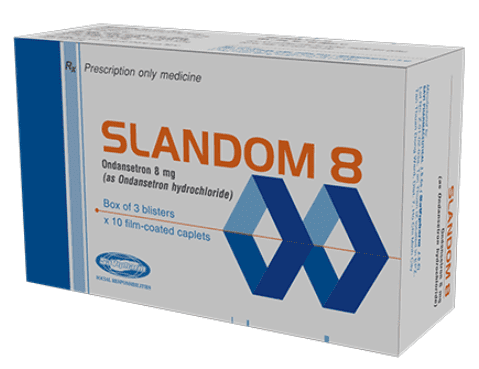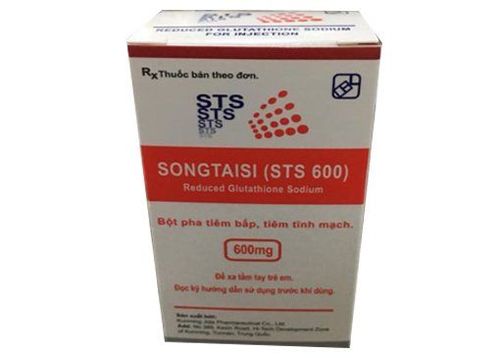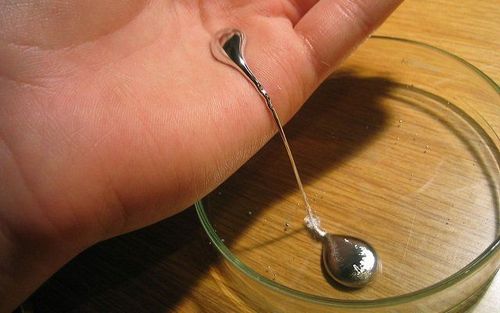This is an automatically translated article.
Glutathione is an endogenous tripeptide, present in the cells of all organs and apparatus in the body. The wide availability of Glutathione is related to the variety of biological functions of this active substance; including important roles in biochemical and metabolic processes. This is also the main active ingredient present in the drug Glurinax.
1. What is Glurinax?
Glurinax drug is a drug in the group of emergency and detoxification drugs, the drug is prepared in the form of lyophilized powder for injection with 1 bottle of distilled water for injection 5ml
The main ingredient of Glurinax is Glutathione, content 600mg.
Glurinax drug is manufactured by Na No Gen Pharmaceutical Biotechnology Co., Ltd - VIETNAM, the drug circulates on the market with registration number VD-26491-17.
2. What does the active ingredient Glutathione in Glurinax do?
The sulfridilic group of cysteine in Glutathione very easily reacts with other chemicals or metabolites by electrophilic mechanism, thereby inactivating exogenous substances that can be toxic to the body. In addition, reduced form of Glutathione, when reacting with a large amount of substances through oxidation, will create a less toxic complex, which is easily metabolized and excreted from the body.
As a result, Glutathione is applied in the treatment of toxicity related to the above mechanisms, such as hepatotoxicity caused by ethyl alcohol or drugs, or by specific chemotherapeutic agents...
3. Indications - contraindications of the drug Glurinax
Indications of Glurinax drug in the following cases:
Assist in reducing the neurotoxicity of radiation therapy and other cancer chemotherapy agents including cisplatin, cyclophosphamide, oxaliplatin, 5-fluorouracil, carboplatin : Intravenous Glutathione is administered before radiation therapy and prior to the above chemotherapy regimen. Support in the treatment of mercury poisoning: Combined infusion of Glutathione with specific drugs to treat mercury poisoning such as 2,3-dimercaptopropanol, meso-2,3-dimercaptosuccinic acid and high-dose vitamin C helps to reduce the concentration of mercury. mercury in the blood. Supporting the treatment of alcoholic cirrhosis, cirrhosis, hepatitis B, C, D, fatty liver, Glutathione helps improve the patient's condition and biochemical indicators such as bilirubin, GOT, GPT, GT reduce MDA and markedly reduced liver cell damage. Support for the treatment of diseases related to peripheral, coronary, and hematological disorders: Glutathione helps to improve hemodynamic parameters of large and small circulatory systems; help prolong the painless walking distance of patients with arterial occlusion of the lower extremities; improve vasopressor response to coronary vasodilators such as acetylcholine, nitroglycerin in patients with coronary risk factors; improve anemia in dialysis patients due to chronic renal failure (infusion of Glutathione at the end of the dialysis cycle reduces the dose of erythropoietin by 50%). Support in the treatment of subarachnoid bleeding: Help patients improve symptoms of subarachnoid hemorrhage. Support in the treatment of non-insulin dependent diabetes: Glutathione increases insulin sensitivity. Support for the treatment of acute pancreatitis: glutathione is effective in preserving the function of organs against the attack of chemical mediators produced by the inflammatory response. Contraindications of Glurinax: Do not use Glurinax for people with hypersensitivity to Glutathion or one of the ingredients of Glurinax.
4. Dosage and usage of Glurinax
Intravenous infusion of Glurinax: 600 mg/day. More serious conditions: use Glurinax at a dose of 600 - 1200 mg / day. 4.1. Using Glurinax by intravenous infusion Support to reduce neurotoxicity caused by radiation therapy and cancer chemotherapy:
Slow intravenous infusion of Glurinax drug just 15 minutes before radiation therapy: Dosage of the drug Glurinax is 1200 mg. Slow intravenous infusion of Glurinax in 15 minutes before chemotherapy regimens (Cisplatin, Cyclophosphamide, Oxaplatin, 5 fluorouracil, Carboplatin): The dose of Glurinax is 1500 - 2400 mg. Repeat dose of Glurinax 900 - 1200 mg after the 2nd and 5th day of treatment, possibly weekly repeat dose of Glurinax 1200 mg. Support in the treatment of mercury poisoning:
The dose of Glurinax in the acute phase is 1200 - 1800 mg/day. The maintenance dose of Glurinax is 600 mg/day until recovery. Support treatment of alcoholic cirrhosis, cirrhosis, hepatitis caused by viruses B, C, D, fatty liver:
Glurinax drug supports the treatment of alcoholic cirrhosis: Glurinax dosage is 600 - 1200 mg/day, administered by slow intravenous route; Glurinax drug supports the treatment of cirrhosis, viral hepatitis, fatty liver: Use Glurinax at a dose of 600 - 1200mg/day, slowly intravenously until the patient recovers. Glurinax drug supports the treatment of diseases related to peripheral, coronary, and hematological disorders:
Peripheral vascular disorders: Use Glurinax at a dose of 600mg/time, 2 times/day, by intravenous infusion. Coronary artery disease: Intravenous infusion of Glurinax 1200 - 3000mg or infusion directly into the left coronary artery 300mg of Glurinax (50 mg - 2 mL/min). Patients on dialysis due to chronic renal failure: Infusion of Glurinax 1200 mg/day at the end of each dialysis cycle reduces the dose of erythropoietin by 50%. Glurinax medicine to support the treatment of subarachnoid bleeding: Slow intravenous infusion of Glurinax 600mg immediately after surgery, repeat the above dose every 6 hours for 14 days or more.
Support for the treatment of non-insulin dependent diabetes: Glurinax is used at a dose of 600 - 1200 mg/day, by slow intravenous injection continuously for 1 week, then used 2-3 times a week, each time using Glurinax ,6 g.
Support in the treatment of acute pancreatitis: Use Glurinax at a dose of 600 - 1200 mg/day, administered by slow intravenous injection.
4.2. Using Glurinax by intramuscular route Glurinax drug supports in the treatment of male infertility: 600-1200 mg/day, continuous intramuscular injection of Glurinax for 2 months.
4.3. Notes on how to use Glurinax Glurinax solution after reconstitution will be stable for 2 hours at room temperature (25°C) and 8 hours at 0 - 5°C. Intravenous infusion: Reconstitute the Glurinax 1200mg vial with 4ml of distilled water for injection, then dilute with at least 20ml of solution for infusion: 5% dextrose, 10% dextrose, 0.9% sodium chloride, Lactated Ringer, sodium bicarbonate 1.4%... and then conduct intravenous infusion for 30 minutes.
5. Glurinax side effects
Few cases of taking Glurinax have nausea/vomiting, headache, skin rash (which goes away when the drug is stopped). Patients should inform their doctor about the side effects encountered when using Glurinax.
6. Attention when taking Glurinax
When Glurinax is given intravenously, Glurinax must be completely dissolved in water for injection, then a clear, colorless solution is obtained and slow infusion.
Experimental studies have shown that there is no evidence of embryotoxicity of Glurinax, this drug, like all other new drugs, is not recommended during pregnancy and to the child. .
With the undesirable effects noted when taking Glurinax medicine, the drug may affect the ability to drive vehicles and use machines, this should be kept in mind when the patient is taking Glurinax medicine.
Please dial HOTLINE for more information or register for an appointment HERE. Download MyVinmec app to make appointments faster and to manage your bookings easily.




